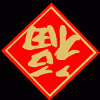Leaderboard
Popular Content
Showing content with the highest reputation on 03/23/2021 in all areas
-
Great work BangBangSan! The seller of the original was initially asking $1200 back in October. The Handle came from this sale, https://www.ebay.com/itm/WW2-Japanese-NCO-OFFICERS-Katana-SWORD-No-Scabbard-War-Bring-Back-Make-Offer-/274683036317?hash=item3ff462829d%3Ag%3AZDgAAOSwB1RgKJA4&nma=true&si=Fqt8v0ReL%2FgRvp7smL77g14iJXI%3D&orig_cvip=true&nordt=true&rt=nc&_trksid=p2047675.l2557 Now the monkey is also selling on the bare blade after stripping the handle. https://www.ebay.com/itm/wwII-Japanese-Army-officer-NCO-SWORD-blade-only/114737303547?hash=item1ab6e04ffb:g:XcIAAOSwoOVgWUEy3 points
-
Dear Neil. I can sense your excitement, now slow down a bit and start from the beginning. Your sword is signed, "Bishu Osafune Sukesada". The one you have identified is one who signed as, "Sakushu", not Bizen. (if you have clicked on the spoiler from Piers then you already know that.) As I am sure you will have noticed there are a lot of smiths signing Sukesada. A lot. Out of all of them this mei is the commonest so pinning it down to a specific smith is very unlikely. Even if you get this sword put into a proper polish and submit for papers it is likely to come back confirming the mei as Sukesada without defining the individual smith. The link Ken has given you will get you started on sugata but don't be surprised if you find this tricky, swords posted here get estimates from several hundred years apart sometimes. (You don't give dimensions which would be useful.) As the sword is out of polish you are going to have to have a good look and see what you can see of the hamon and boshi and fit those to the work of Bizen smiths. As to the combat damage make what you like of it but I should think it is as likely to be the JimmyandBen ryu school of kenjutsu when they got hold of Dad's swords and played samurai with them. Enjoy the journey! All the best.3 points
-
Monkey just list this NCO sword as a rare prototype https://www.ebay.com/itm/RARE-PROTOTYPE-WWII-Japanese-Army-officers-samurai-sword-NCO-LEATHER-SCABBAR/114737295938 Actually, he just bought an NCO sword without a handle from eBay and put a handle on it, now he is trying to scam people. What a shame. Original sell https://www.ebay.com/itm/Imperial-Japan-Type-95-NCO-Gunto-sword-/3931102158272 points
-
2 points
-
Could be somethig like 熊谷囗明 (Kumagai ...iaki)? See: https://blog.goo.ne.jp/tsuba_001/e/6227c6f39ad54c9eb403554d0d3092672 points
-
Would it please be possible please to revert this thread to the less obvious fakes? Not these crude imitations (eg the guilt brass monkey and wasp above) of tsuba-like objects but actually good-quality tsuba where a discerning eye notices something is amiss? Otherwise, you will keep flooding this thread with shocking examples but we as a forum shall not necessarily be learning, progressing, etc. Thank you.2 points
-
Posted by Nick Komiya. Priceless stories, more valuable than the gunto we collect. https://www.warrelics.eu/forum/f216/1941-ija-weapons-prices-todays-values-786328-post2154949/#post21549492 points
-
2 points
-
Well done, Georg, what a journey. If Saito san polished it, it must be stunning like a jewel now. He is one of the very-top polishers currently. If you leave it there, yes it is another year (as it might get exhibited too) but probably worthwhile. In this hobby unfortunately sometimes years pass before we see our treasured possessions. Frankly, even with “only TH” people in the know could judge the quality and understand that it is Juyo level. And if you do not intend to sell it or brag around that it is Juyo, then you know it is the same sword whether it is TH or Tokubetsu Juyo. This is one of these rare stories of serendipity that make people here happy and hopeful. Please continue sharing with us. Thank you.2 points
-
John & Chris, thanks for the compliments! Christopher, don't worry - Oshigata and professional pictures were already "ordered". They finally are something to then share in here too. Michael, the blade is already polished. It was sent to Japan, Tanobe confirmed signature being authentic, then submitted to NBHTK Shinsa where it was also confirmed original, but papers will only be issued to blade in polish. Therefore it got a double gold habaki, shirasaya and was polished by Saito, submitted again for December shinsa where the result now was Tokubetsu Hozon paper achieved. So all done. Not sure if I should submit it to Juyo though, would mean another year in Japan.2 points
-
Some time since the last update ... today I got informed that the result notification of the NBTHK Shinsa came in, it achieved Tokubetsu Hozon.2 points
-
Goto Teijo (Mitsumasa) was the 9th generation mainline master. His works cover many motifs and are always a treat to see. Happy to be the new caretaker for these 2 kozuka. A long eared rabbit theme done in copper with rabbit done in silver. Nanako is small and fine and the detail of the rabbit body hair and ear features is excellent. A massive drum on shakudo, gold uttori. Again, the nanako it's excellent and while I tried to capture with photos, how pronounced the drum figure looks in hand is quite spectacular. This piece has a special meaning due to where it came from. Both feature a kiwame-mei by the 15th generation master Shinjo (Mitsuyoshi) which attributes both to Teijo and states they are as Teijo made them without alteration ('saku'). A very exciting Friday to say the least.1 point
-
Hi all! I am really new at nihonto and enjoying the challenge and all the learning that goes with it. I recently purchased this wakizashi at auction and I am wondering if anyone can verify the signature. I believe that it is signed by Sukesada from Mimasaka. I came to this assessment by comparing the characters in the Nihonto Club's smith index for ID SUK950 - Hachirojiro Sukesada. The blade is out of polish and I am especially intrigued by what appear to be minor damage along the edge and on the tsuba that look like combat damage. The damage seems consistent with a practitioner of Niten Ichi Ryu . Whether it has any value or not, I am more interested in determining its age, as it seems to be a blade with stories. Ultimately I would like to see it polished and preserved if it has any modest value. Is this a Sukesada blade? or something else? Your opinions would be greatly valued! Thanks, Neil1 point
-
Mihara: Wakazashi. Mihara. NBTHK Hozon paper. Koto. Nagasa: 54.8 cm. Kasane: 6.3 mm. In good polish. only negative is opening under habaki, it does not show when habaki is on, it was probably shortened to place it where it would not show. Silver foil habaki and good shirasaya with ivory inserts. $1100 less than half restoration cost and enjoy it now instead of waiting1 point
-
1 point
-
Bastard. I'd encourage anyone who has dealt with him to open a fraud case. I'll assist in any way.1 point
-
The scumbag ought to be beaten with a bokken to within an inch of his life, IMHO.1 point
-
The article rewards a second reading, it was 1937, so just 4 years into the China Incident, and a special event "hosted" in the Dept. store and managed by the Osaka Sword Club. The original article also mentions the amount of money subbed' by the Army, but it was not enough to cover all necessities. Inflation was already eating into it's value. The club had swords at 100 to 200 yen, but again money was tight, and some wanted a better blade for their beloved.1 point
-
1 point
-
I am a simple person living life by personal and highly erroneous experience. Which tells me I am yet to see some other name repapering to Norishige or Norishige repapering to someone else, unless the original papers are pre war. Possibly something like this happened, but must be very rare. There are no green paper Norishige quite likely for this reason, unlike virtually every other major Soshu name. He is very distinctive. The wise book, which no one is expert enough to argue against, says that Norishige, Yukimitsu and Masamune are the very same thing, but there is surprisingly little evidence of that. You don't find Yukimitsu who became Norishige and vice versa. Go can unfortunately repaper, and fortunately one can repaper to Go. You need something with lots of nie, which gradually varies in size, high quality hada and from a very specific period. Its not very common to find such an item. 95% of things papering Tametsugu are from 1355+, they can't repaper to Go. When it comes to 1350-1380, there is unfortunately clear evidence that all Soshu smiths by this time already had pretty good understanding of each other's work and could from time to time emulate their peers. Daito attribution from this period has "sort of" two default judgements - Hasebe (especially if its from 1350s) and Shizu if it has togari and heavier on masame. Tametsugu is frankly speaking another big blob of judgements, which covers things that demonstrate some well defined Etchu elements. Its a big blob, as it includes those that have a lot of Etchu flavor, and those that have relatively little. There is Etchu/Kaga Sanekage, but this attribution usually means the blade shows good Etchu quality in couple of areas, but is otherwise inferior. Soshu daito which do not get Shizu or Hasebe or Tametsugu attributions tend to have something very specific which puts them into another, more specific group. Sa often tends to have almost Bizen like quality to it. Lots of nioi. Can have utsuri. Can have choji. But still clearly Soshu. Soden Bizen is even further away. Mino Kanenobu will have somewhat later sugata, with lots of sunagashi but somewhat nioi heavy hamon. He often repapers Sue Sa or Hirado Sa, and vice versa. Similar situation with Naotsuna, Kinju and a few others. For an ignorant bumpkin like myself, Tametsugu is not a judgement based on there is being a sword with features such and such, signed Tametsugu and everything similar is thus judged as Tametsugu. You can't produce this kind of certainty on the basis of second rate oshigatas. Its a name to use when one sees Etchu features on later blades, plus possibly some other Soshu lineage's features. Again personal experience - Tametsugu thus repaper to other names with about half the frequency of Naoe/Kaneuji Shizu. The latter group is such humongous attribution blob, it can, with small probability, but can repaper to almost any contemporary Soshu name. The only thing which has more uncertain outcome is Masamune with pre war papers. There are about two dozen known Kaga, Echizen, Etchu and Echigo contemporary smiths who frankly all worked in related styles. There was very likely the second generation Norishige. Do you often see mumei blades papered to him by NBTHK? But yes, there are signed Norishige from 1360s which are accepted as genuine second generation. Where do unsigned go? Was Tametsugu some great workaholic, but save for inferior Sanekage everyone else who ever signed their work in these four northern provinces had a major drinking problem? No, its a typical Japanese treatment of Koto blades - take a school with 20 known smiths, but attribute 95% of mumei blades to only 2-3 of them, based on features/quality/ or maybe even something else. So the question "what would this Tametsugu repaper to in 30 years/by NTHK/by someone else" to me is both interesting and realistic. I would share my personal practical experiences in the matters of repaper arts, but there is a tiny problem being I am not sure the pieces I since sold today still retain the entire set of papers. The global warming produces winds which sweep away all kinds of things, and I don't want to endanger my dear buyer's sword values simply based on some false sense of either honesty or community. So I'll just pontificate - I was always taught that vocalizing once's perception of art pieces is one of the main learning methods, and the more one vocalizes personal perception rather than something read out from a book, the more one could learn. Especially so when such perceptions are debunked as wrong!1 point
-
1 point
-
For high-end swords, Jimmy Hayashi in San Francisco is fully Japanese-trained and certified. Possibly the only one in NA.1 point
-
I misunderstood your statement at the beginning about the fit. I thought it was all too loose when assembled. But you're saying you can't get the tsuka on far enough to line the holes up, right? So, is the limit at the fuchi? In other words, when fully installed is the handle and fuchi hard tight against the seppa and tsuba? if so, the wooden face of the tsuba could be shaved until the holes line up. But if the handle is as far as it will go onto the nakago, and the tsuba and seppa are a bit loose, then it's like John is saying - the end of the nakago is "hitting bottom" before the holes line up. I have a couple of gunto like this and they both have shortened mekugi, highly tapered and they go into the hole at an angle. Not ideal but it works. Something I'd try - put the handle on the nakago without the fuchi, seppa, and tsuba; just bare blade and handle. See if the handle goes on far enough to line the holes up. If so, the problem is at the face of the handle. If not, then the problem is inside where the end of the nakago hits the top end of the inside.1 point
-
What's another year when we're talking about a journey like this, and there is so much momentum? When Juyo is within grasp? Later, it will seem like the year went by in the blink of an eye.1 point
-
I had some free time today and was able to get them documented in a PDF for posterity. All the hard work was done by @k morita and others on the board here already. Any errors or omissions are my own. Modern Japanese Swordsmiths_Kanji corrections.pdf1 point
-
Jacques Thanks for the corrections and reminding us of the name of the progenitor of the doubts about Masamune, That is useful. I do remember there was a subsequent resurgence in 20th century of that vein of thought/belief, after Imamura Choga but I would need to dig it out. Why do you, however, have to be argumentative? You are not achieving anything by this but alienating people. I respect and look for thoughtful discourse rather than dismissive insults. You have knowledge and experience to bring to the forum but sometimes pettifoggingly cling on to a particular word or sentence. Please take it positively and not as an attempt by me to antagonise. I do pay attention, especially when I talk to Tanobe sensei, the NBTHK lecturers or people with extensive knowledge and collections. It is easy to be a desktop warrior, waging verbal campaigns. It is also easy to refer to 2-3 books, accepting them as canon, but it takes a broader minded person to question, interrogate, juxtapose texts with differing opinions. Every authority has something to teach us: Fujishiro, Kanzan, Kunzan, Tanzan, Nakahara, Nagayama, Yamanaka, etc etc. Of course, it is easier to understand that basing (inferring) mumei work via signed precedents is the strongest foundation for analysis. But nowadays the shinsa and others also place reliance on old (Honami usually, but also other) documented examples of the the masters - be they Masamune, or one of the students, even if these are not signed currently (or were never signed), or non-Soshu works. In other words, reliance is placed on preceding authorities who might have seen such signed examples before they were suriage, or compare to blades which have been preserved over the centuries in the various daimyo families. That is why we still have and refer to the Tsuchiya oshigata, Kozan oshigata, Imamura oshigata, Koon oshigata, Kyoho Meibutsucho, etc or in more modern times - indeed Fujishiro volumes, but also Kunzan’s Kanto Hibisho or Tanzan’s Go-ka-den No Tabi, etc. I could append documents talking about the existence of Go. And with all due respect to Fujishiro, they will be by arguably ‘greater’ experts than Fujishiro, having seen more than him and not just photocopied pictures of the mei of Kokuho, JuBi and JuBu swords available at the time. At least this how I view Honma Junji, Kunzan sensei, who in Nihon-koto-shi posits:”I conclude that Gō Yoshihiro is the most skilful smith amongst the students of Masamune and is equal to Sadamune in skill.” Anyway, this is a pointless argument and unwelcome digression from the topic at hand. The sword is beautiful and has been judged indeed by experts as Tametsugu. Understanding why the judgement has been conferred, and what the alternatives could be, shows eagerness and interest to learn.1 point
-
1 point
-
https://studyingjapaneseswords.com/2018/03/17/20-nanboku-cho-tanto/ The photo in "Chapter 19 Nanboku-cho Period Tanto" was changed. Please click the link above to go to the chapter directly. I finished editing and correcting the draft and working to publish the book but I am having difficulty deciding which publisher suits me and how to go about. Vast information to go through. Creating a physical book is harder than writing. Yurie1 point
-
The Akihide has been the hands of at least 3 other collectors in St. Louis before I got it from Ted Kiss. I don’t know the earliest history of how it came to leave Japan but have to assume it was a GI bring back. But with a total length of almost 6 ft it would have been difficult to hide. The saya was split and the blade was out of polish when I got it. It’s an amazing piece when one considers the effort needed to heat and forge weld what was likely something over 20 kilos of steel when, Hikosaburo started.1 point
-
$300+ for the silver cat scratch habaki $250 to $500 for the NBTHK papers, depending where / whom submitted it. * In polish*. ko-mihara. --Good school and at least 520+ years of age. Mark, this is borderline a charity gift to somebody. [Be sure to get a charitable donation slip, as tax deductible for 2021.]1 point
-
1 point
-
The blade isn't rusty as it appears in the picture. I used a filter to increase sharpness and the brown tinting is a side effect. This will go off for polish shortly. I'm hoping to shoot pictures of the Saburo Akihide (45" / 114.3 cm) O-Dachi this week mentioned in a previous thread. It's a hand full and getting it positioned for photos is difficult. However, the polish brought out the best in it and I think many of the members, particularly the Gunto collectors will appreciate it. Jim1 point
-
Shortly after this thread started in October 2011, Slough san passed away according to this NMB thread. RIP John Scott Slough, Modern Japanese Swordsmiths 1868-19451 point
-
1 point
-
Stuff like that happens all the time. I received a sword where the tsuba didn't fit, the habaki didn't fit, the tsuka didn't fit, the kozuka didn't fit, the saya didn't fit.0 points
-
Maybe instead of a 'hidden Christian' motif, could it be a 'hidden Hideyoshian' symbol, the 'kirimon' able to be explained away under the Tokugawa as 'sugi' or 'sanbon sugi'?0 points
-
0 points


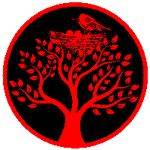
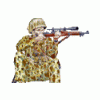



.thumb.jpg.51b8b51f061cb9b4265e4b12a3574723.jpg)
.thumb.jpg.200865a5c4ce1ea3a5a163a3814ab017.jpg)

.thumb.jpg.2b56e377dfaeb936bca514e277f4ea5a.jpg)
.thumb.jpg.c78fa4c28b487d9ab312aa7fcab8a856.jpg)


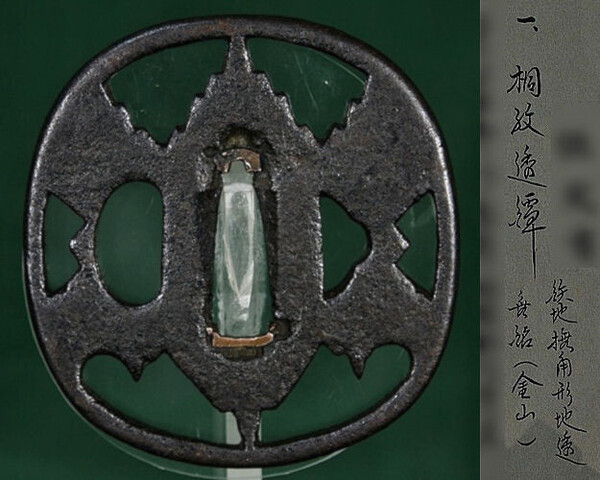
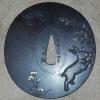





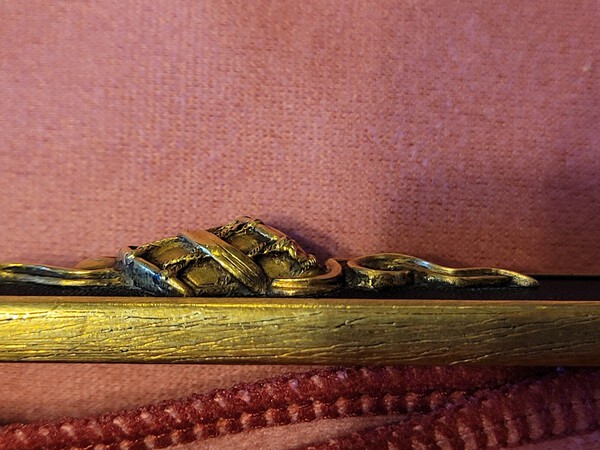




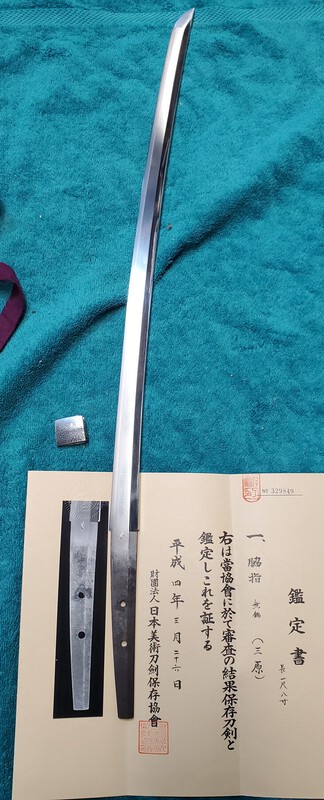


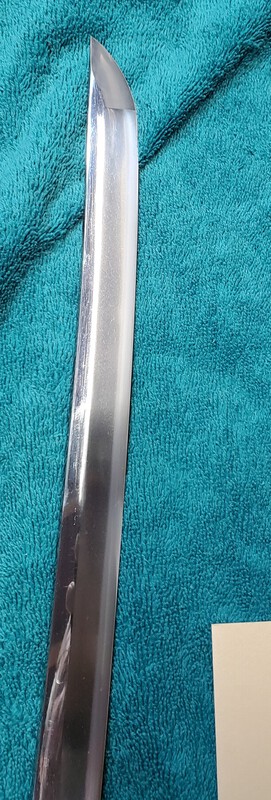







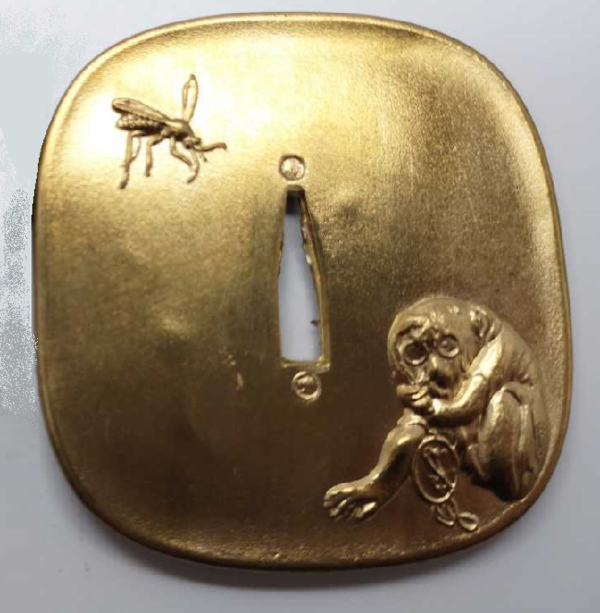






.thumb.jpg.19ad866ba31ccb65f0dd1504e0e9f996.jpg)
.thumb.jpg.687b2801262eb0d6298c1d4620b944f2.jpg)







